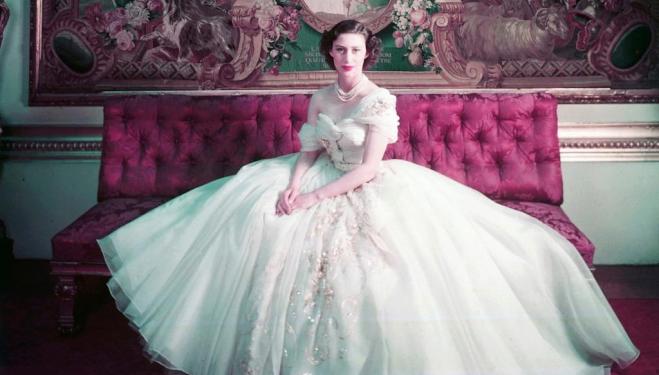
So, how does a young fashion designer make the best of this somewhat bleak landscape? With positivity, adaptability and creativity, if the collections on display at the new exhibition Brave New Worlds: The Changing Landscape of Fashion are anything to go by. Featuring the work of 16 emerging designers from around the globe, there is a strong emphasis on sustainability, community and communication. Housed in the West Wing Galleries at Somerset House, this is an immersive, enthralling glimpse of the future of fashion as part of the International Fashion Showcase, a programme which is renowned for its talent-spotting ability.

Rahemur Rahman, c: Gareth Wrighton
Each designer has created an installation to best showcase their work and the concept behind it, and while there is a great sense of diversity of ideas and presentation, there are themes which draw each together – not least a passion for challenging the status quo, and toppling the old world order.
Community is a key theme in the work of Bangladeshi Brit Rahemur Rahman, who worked with home-schooled children and youth organisations from his Tower Hamlets neighbourhood in a bid to highlight their potential and foster dreaming big. His eclectic exhibition space 'London's Living Room' is adorned with colourful framed self-portraits by the children as well as pictures from his own family photo album and nods to his cultural heritage. For his menswear designs Rahman uses khadi – a hand-spun, naturally dyed fabric that he says can biodegrade – marrying traditional fabrics and prints of Bangladeshi dress with an updated silhouette.

Thebe Magugu, c: Aart Verrips
There is a palpable sense of national pride in the presentation by Thebe Magugu from South Africa, who places his country's updated constitution centre-stage, emphasizing its progressive nature and global outlook. His collection puts a modern spin on traditionally South African silhouettes and prints, celebrating the role of women and their new position afforded by the changes in his homeland.

Cedric Mizero, c: Chris Schwagga
Cedric Mizero uses talismanic items from his village in Rwanda to build a narrative: 'Bead by bead you make a thread; living and working together you make a community. Threads braided into rope builds the unity of all of us,' said Mizero in explaining his concept. There is a dramatic, almost sculptural quality to his work which is crafted from repurposed materials and symbolic objects.

Duran Lantink, c: Jan Hoek
This reclamation is used by many of the designers as a practical solution to a shoestring student budget, as well as in response to the industry's unsustainable supply chain. Amsterdam-based designer Duran Lantink uses a collage technique on his designs piecing together shoes, dresses and knitwear from designer deadstock and vintage buys. This approach stretches to the installation itself too, which has been styled to look like the aftermath of a Black Friday sale, questioning the need for near year-round discounts in order to stimulate sales from a buying public that might just have enough already. 'This whole installation is to create a discussion for the responsibility of mass-producing luxury items,' says Lantink. 'It's a compliment, because I love the items a lot, but I do think it's crazy how much is produced and over-consumed.'
Forming part of London Fashion Week, Brave New Worlds serves as a timely reminder that London is a vital home to progressive fashion of any origin, and that we must act now to ensure it remains as such. And while the aesthetic and message of each designer is unique – shaped by their heritage, homeland and hopes for the future – if there is one overriding message to be taken from this free exhibition, it's that complacency is not cool.
| What | Brave New Worlds: The Changing Landscape of Fashion, Somerset House |
| Where | Somerset House, Strand, London, WC2R 1LA | MAP |
| Nearest tube | Temple (underground) |
| When |
11 Feb 19 – 24 Feb 19, 10:00 AM – 6:00 PM |
| Price | £free |
| Website | click here for more information |


